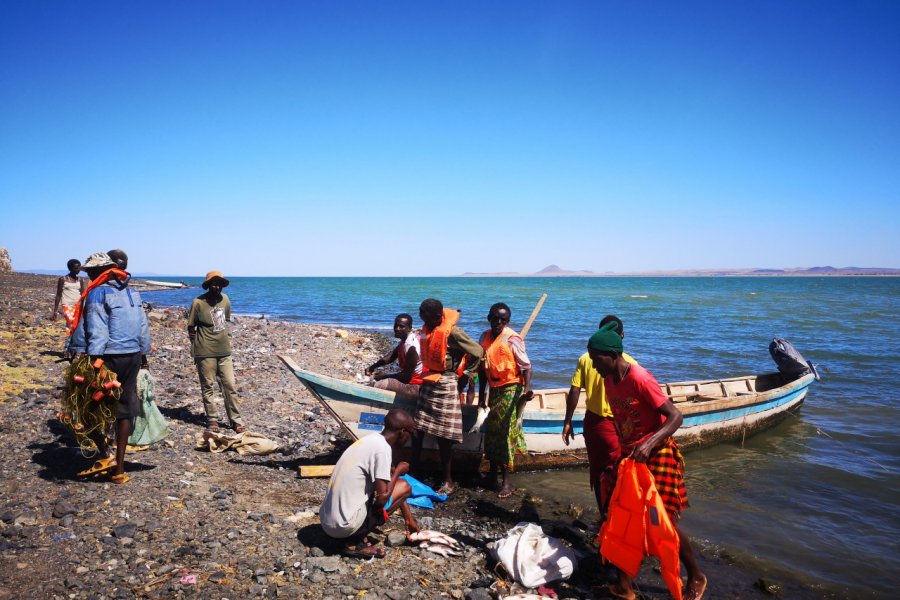Travel Guide Loiyangalani
Find an accommodation
Advertising
It is the most beautiful of the two banks of the lake, but also the most difficult to reach. Loiyangalani is the only village on the Turkana. It can be reached either by the southern road (Maralal, Baragoi, South Horr), or by the north (Marsabit, Kalacha, Chalbi desert, North Horr). After endless hours of tracks often broken, the arrival on the shore of the lake is a moment of intense emotion as the scenery is sumptuous.According to the Turkana legend, everything here, originally, was only plains covered with a green and fat grass. The men had chosen to live there for the beauty of these meadows. They had access to a magical, inexhaustible water source. All they had to do was lift a stone and the water would come out. However, the women were never to forget to plug up the entrance of the spring once their container was filled. But one day, one of them forgot. And the water flowed, flowed, poured in abundance on the surrounding meadows until covering them completely... That's why the lake would have this jade green color which characterizes it..Loiyangalani is a small city, which counted only 1 000 in the years 1990. Today, the buildings are rare, the city has not developed much in terms of infrastructure, but its population would be estimated today at 30 000 inhabitants, and the city literally takes the appearance of a refugee camp. The only difference is that the traditional habitat predominates. The formerly nomadic communities (Turkana, Samburu, Rendille...) have become sedentary, weakened by regional and inter-community conflicts and repeated droughts. They have found refuge where international food aid allows them to survive and where drinking water remains accessible.North of the city lives (or survives) one of the smallest tribes in Kenya: the El Molos. This fishing people, who have lived here for more than two thousand years, now number about 1,070 and are slowly losing their cultural identity. The arrival of the tourists (their number remains however very reasonable...) and especially the multiplication of the marriages with other ethnic groups (in particular with the Turkanas and the Samburus) deeply modified the way of living and the customs of the El Molos. The government had even come, to avoid a total disappearance of the tribe, to grant an allowance to any child born of two El Molos parents! Two El Molo villages remain. It is possible to go and meet them for a small fee.
What to visit Loiyangalani?
Advertising
Suggested addresses Loiyangalani
Weather at the moment
Advertising
Organize your trip with our partners Loiyangalani
Transportation
Book your plane tickets
Car Rental
Boat rental
Accommodation & stays
Find a hotel
Holiday rental
Find your campsite
Tailor-made trip
Immersion travel
Services / On site
Activities & visits
Find a doctor





